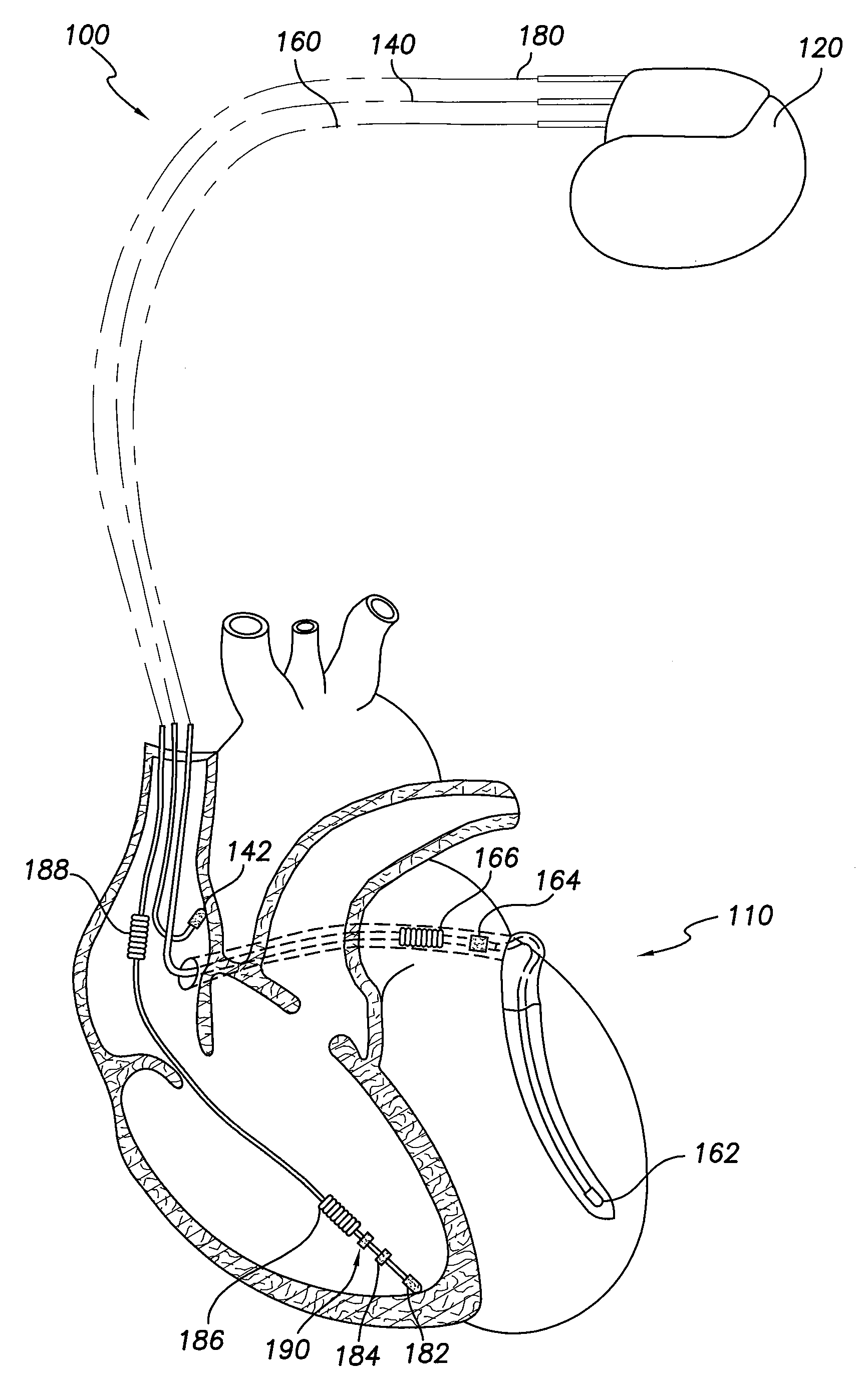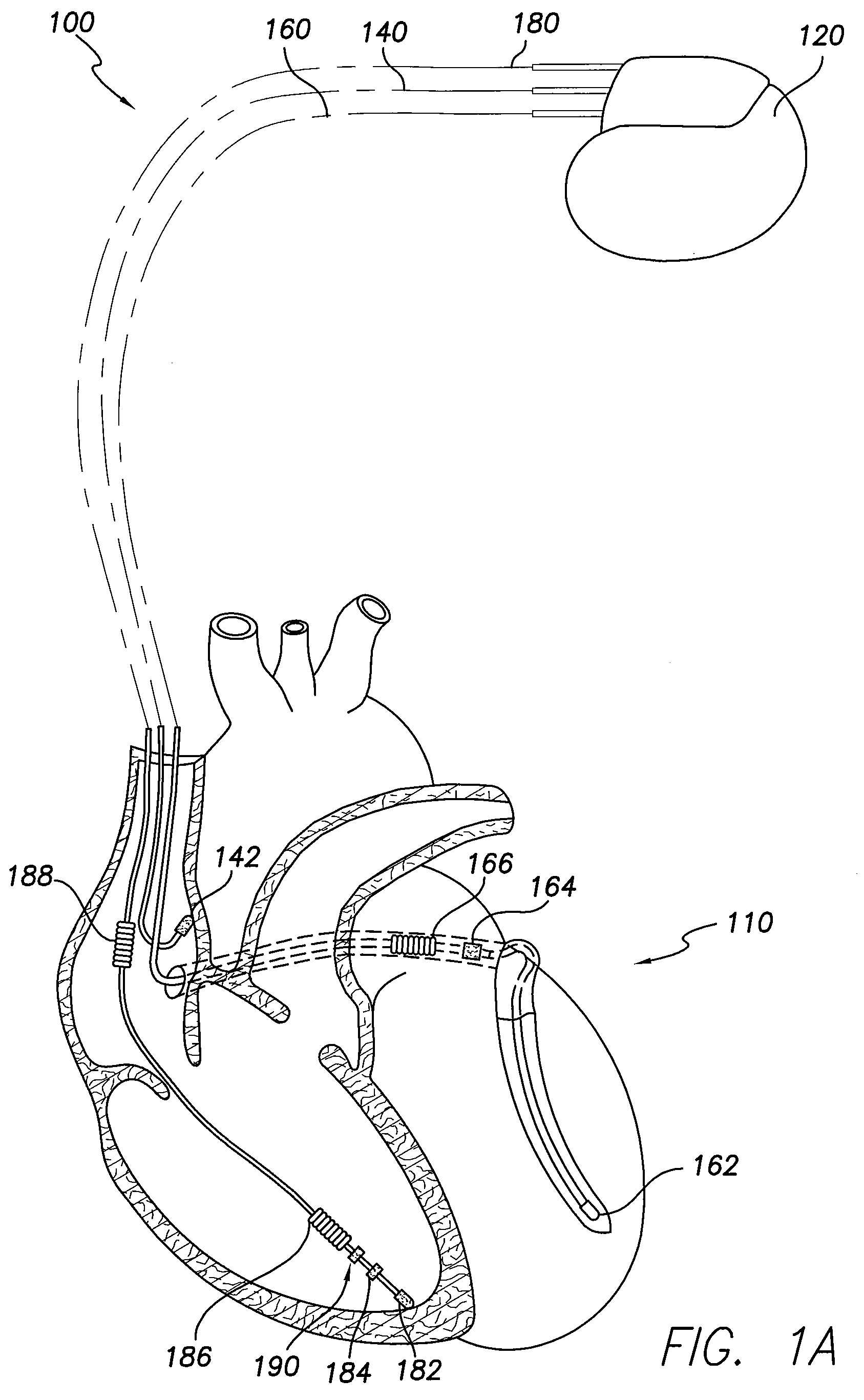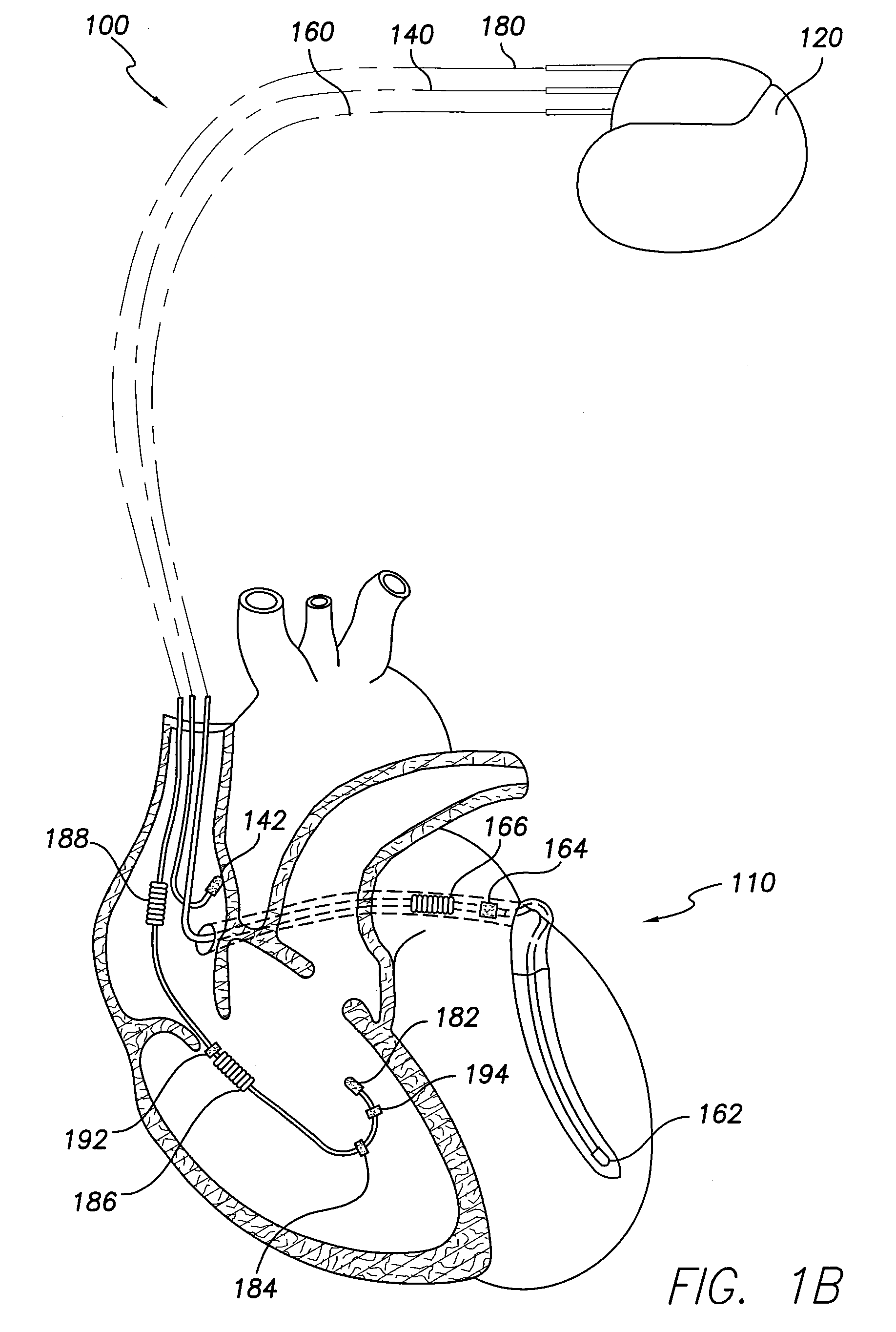Pulmonary pressure monitoring
a technology of pulmonary artery pressure and monitoring, which is applied in the field of cardiac monitoring, can solve the problems of high risk of mortality, patient deterioration may go unnoticed, and patients may be susceptible to acute pulmonary edema, so as to improve the signal-to-noise ratio
- Summary
- Abstract
- Description
- Claims
- Application Information
AI Technical Summary
Benefits of technology
Problems solved by technology
Method used
Image
Examples
example 1
[0087]This example illustrates some limitations of echocardiograhic detection of PHT, which depends on the presence of significant tricuspid regurgitation (TR). The detection of maximal TR flow may be used to calculate the pressure gradient between the right ventricle and right atrium. By adding the pressure gradient to the right atrial pressure, the right ventricular systolic pressure may be estimated. Similarly, pulmonary artery diastolic pressure (PADP) may be estimated by calculating the pressure gradient between the right ventricle and right atrium at the time of pulmonary artery valve opening, since right ventricular and pulmonary artery pressure has been shown to equilibrate at this point in the cardiac cycle. PADP in turn may be used to estimate left ventricular filling pressure. B. Stephan, et al., “Noninvasive Estimation of Pulmonary Artery Diastolic Pressure in Patients with Tricuspid Regurgitation by Doppler Echocardiography” Chest, 1999, 116; 73-77. FIG. 5A illustrates ...
example 2
[0088]In this example, RV free wall velocities at a region of interest are acquired by tissue Doppler recordings, and the corresponding events identified. FIG. 7 illustrates a myocardial velocity-time graph of a region of interest (ROI) on an RV free wall. Velocity data were acquired by tissue Doppler recordings. IVRT (dashed horizontal double headed arrow) was calculated by measuring the time interval between the end of the systolic wave (ES) and the beginning of diastolic wave (D). The systolic ejection phase (SEP) of the left heart occurs over the period indicated by a double headed arrow. At the end of SEP, the aortic valve closes (AoVc). Pulmonary valve closure occurs at about the same time as AoVc, followed by tricuspid valve opening (TVo). Motion of the RV free wall corresponding to each of these events of the cardiac cycle is not simultaneous with the event because the motion generated by the events is transmitted through cardiac tissue and intracavity chamber before they ar...
example 3
[0089]FIG. 8 compares waveforms generated by surface ECG and implanted lead-based cardiomechanical sensor (CMES) measurements. In this experiment, the CMES sensor was positioned at the RV apex, in the ring position, with the lead tip contacting the myocardium. The top trace is the ECG; the middle trace is the first derivative of CMES output (d(CMES) / dt); and the bottom trace is the CMES output. “ES” indicates the regional end-systole, and “D” indicates the onset of regional mechanical diastole. Three cardiac cycles are illustrated, indicating the consistency of the signals. Note the similarities between the d(CMES) / dt trace and the ultrasound trace illustrated in FIG. 7.
PUM
 Login to View More
Login to View More Abstract
Description
Claims
Application Information
 Login to View More
Login to View More - R&D
- Intellectual Property
- Life Sciences
- Materials
- Tech Scout
- Unparalleled Data Quality
- Higher Quality Content
- 60% Fewer Hallucinations
Browse by: Latest US Patents, China's latest patents, Technical Efficacy Thesaurus, Application Domain, Technology Topic, Popular Technical Reports.
© 2025 PatSnap. All rights reserved.Legal|Privacy policy|Modern Slavery Act Transparency Statement|Sitemap|About US| Contact US: help@patsnap.com



